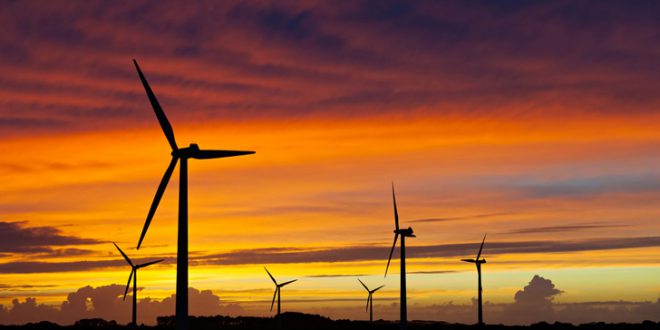The UK’s primacy in the global offshore wind market will be challenged by the rise of development activity in China and the US in the next decade. as the rapidly emerging sector swells to account for a larger percentage of total wind power project pipeline. according to latest figures from Fitch Solutions.
The 40GW of offshore projects now on developers’ drawing boards for UK waters are expected to translate into 13GW of plant in production by 2030. says the analyst. “cementing the UK`s position“ as market leader over the coming decade.
But China. which is dashing to build on the 4 .6GW of turbines already installed by the end of 2018. and the US. where 18GW is in the planning stage off the East Coast alone. will be closing the gap.
“The UK currently dominates the offshore wind project pipeline. but we expect markets such as the US and China to become increasingly important contributors to offshore wind capacity growth over the coming decade.“ said Fitch Solutions.
“To date offshore wind power has been mostly restricted to markets that have been able to shoulder the substantial cost of deploying the relatively nascent technology. with markets such as the UK and Germany driving capacity offtake.` the analyst added.
“However. in line with growing economies of scale and technological innovation – including rapidly increasing offshore wind turbine sizes – the technology has become increasingly cost-competitive in a number of new markets over the past five years. enabling the sector to expand outside of Western Europe.“
The US. said Fitch Solutions. was seeing “rising interest“ in offshore wind as the technology grew in “attractiveness“ to meet US states and cities` decarbonisation plans. while China – where the analyst admitted “difficulty in sourcing reliable project statistics“ left the scale of the country’s plans unclear – was nonetheless forecast to be “the fastest expanding and biggest offshore wind market [globally] in the early 2020s“.
Fitch Solution highlighted that while the offshore sector “remains nascent compared to onshore“. which had more than 540GW installed by end-2018 compared to about 23GW offshore. “this ratio of onshore versus offshore development will shift over the coming decade“.
Offshore wind currently makes up 40% of projects in pre-construction in the analyst’s key project database (KPD). driven by plans to deploy capacity in “substantial volumes“ in the waters off US and Asia. and the continued efforts in the UK and Germany to build more projects in the North and Baltic seas.
“Long lead-times for offshore wind projects and the quicker turnaround of onshore [developments] will mean that the project pipeline for the latter technology will be refreshed more frequently in our KPD.“ said Fitch Solutions
“The offshore wind project pipeline will therefore take up a greater portion of the overall wind project pipeline in our KPD over the coming years. but despite this not threaten onshore wind`s status as the main driver of wind capacity growth.“
The analyst added that it foresaw offshore wind playing “an increasingly important role“ in a number emerging of markets over the coming decade. as cost deflation makes the technology more “accessible“.
Last month. the International Energy Agency. in its inaugural Offshore Wind Outlook. predicted offshore wind would expand to become a main engine of the transition toward a decarbonized global energy system in the coming decades. with the worldwide fleet growing 15-fold to reach at least 340GW by 2040.
 Iran Energy News Oil, Gas, Petrochemical and Energy Field Specialized Channel
Iran Energy News Oil, Gas, Petrochemical and Energy Field Specialized Channel




